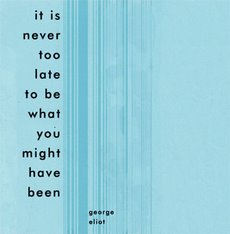TRUTH LIES BENEATH-TAJMAHAL
truth lies beneath
IS TAJMAHAL A TOMB OR TEMPLE
no one has ever challenged it except Prof. P. N. Oak,
who believes the whole world has been duped.
In his book Taj Mahal: The True Story,
Oak says theTaj Mahal is not Queen Mumtaz's tomb
but an ancient Hindu temple palace of Lord Shiva
(then known as Tejo Mahalaya). In the course of his research
O ak discovered that the Shiva temple palace
was usurped by Shah Jahan from then Maharaja of Jaipur,
Jai Singh. In his own court chronicle,Badshahnama,
Shah Jahan admits that an exceptionally beautiful
grand mansion in Agra was taken from Jai SIngh
for Mumtaz's burial . The ex-Maharaja of Jaipur
stillretains in his secret collection two orders from
Shah Jahan forsurrendering the Taj building.
Using captured temples and mansions,
as a burial place fordead courtiers and royalty was a
common practice among Muslim rulers. For
example, Humayun,Akbar, Etmud-ud-Daula
and Safdarjung are all buriedin such mansions.
Oak's inquiries began with the name of Taj Mahal.
He says the term "Mahal" has never been used for a
building in any Muslim countries from Afghanisthan
to Algeria. "The unusual explanation that the term
TajMahal derives from Mumtaz Mahal was illogical
in atleast two respects. Firstly, her name was never
Mumtaz Mahal but Mumtaz-ul-Zamani, "
he writes. Secondly, one cannot omit the
first three letters 'Mum' from a woman'sname to
derive the remainder as the name for the building.
"Taj Mahal, he claims, is a corrupt version of
Tejo Mahalaya, or Lord Shiva's Palace. Oak
also says the love story of Mumtaz and Shah
blundering historians and sloppy archaeologists .
Not a single royal chronicle of Shah Jahan's time
corroborates the love story. Furthermore, Oak
cites several documents suggesting the Taj Mahal
predatesShah Jahan's era, and was a temple
dedicated to Shiva, worshipped by Rajputs of Agra
city. For example, Prof. Marvin Miller of New
York took a fewsamples from the riverside
doorway of the Taj. Carbon dating tests revealed
that the door was 300 years older than Shah
Jahan. European traveler Johan Albert Mandelslo,
who visited Agra in 1638 (only seven years after Mumtaz's death),
describes the life of the cit y in his memoirs.
But he makes no reference to the Taj Mahal being built.
The writings of Peter Mundy, an English visitor
to Agra within a year of Mumtaz's death,
also suggest the Taj was a noteworthy building
well before Shah Jahan's time.
Prof. Oak points out a number of design and
architectural inconsistencies that support the
belief of the Taj Mahal being a typical Hindu temple
ratherthan a mausoleum. Many rooms in the Taj
! Mahal have remained sealed since Shah Jahan's
time and are still inaccessible to the public.
Oak asserts they contain a headless statue of
Lord Shiva and other objects commonly used
for worship rituals in Hindu temples . Fearing political
backlash, Indira Gandhi's government tried to have
Prof. Oak's bookwithdrawn from the bookstores,
and threatened the Indian publisher of the first
edition dire consequences . There is only one
way to discredit orvalidate Oak's research.
The current government should open the
sealed rooms of the Taj Mahal under U.N. supervision,
and let international experts investigate.
THIS IS YET ANOTHER STORY OF HOW EASILY
WE ACCEPT EVRYTHING THAT IS TOLD
TO US AND NEVER QUESTION THE VALIDITY
OF SUCH THINGS
its again our own conditioning that comes in between
ourselves and the truth
as its said
'IF YOU ARE NOT CURIOUS YOU ARE NOT HUMAN AT ALL"






















No comments:
Post a Comment